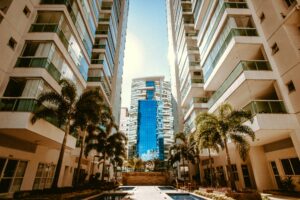Admitted & surplus lines in flux
 An increase in costly litigation is one of the drivers leading to a contraction of Florida’s property insurance market, especially among domestic (Florida-based) carriers. That’s especially true in South Florida, where admitted carriers have been shrinking their footprint or increasing underwriting requirements or raising rates by double-digits (or all three!). Now with the Surfside condo collapse and the ongoing re-evaluation of building inspection practices, the commercial residential market could get very tight indeed.
An increase in costly litigation is one of the drivers leading to a contraction of Florida’s property insurance market, especially among domestic (Florida-based) carriers. That’s especially true in South Florida, where admitted carriers have been shrinking their footprint or increasing underwriting requirements or raising rates by double-digits (or all three!). Now with the Surfside condo collapse and the ongoing re-evaluation of building inspection practices, the commercial residential market could get very tight indeed.
It’s one thing to model for known risks, such as hurricanes, flooding, and non-weather water leaks. It’s quite another to have this new uncertainty introduced: whether enforcement standards of Florida’s building code are up to snuff, especially for older buildings that may not have been subject to the code when they were built. While that very question is being put to a Miami-Dade County grand jury right now, it’s reminiscent of the query made in the aftermath of 1992’s Hurricane Andrew in South Florida.
A grand jury back then (overseen by Assistant State Attorney Katherine Rundle, who today as State Attorney is overseeing the current probe) issued a report revealing inadequacies in the South Florida building code and its enforcement. At issue today from the June collapse of the Champlain Towers South condominium building and the resulting death of 98 residents is whether the current building recertifications for occupancy every 40 years is adequate and being enforced.
As I pointed out in a recent S&P Global article Florida condo tragedy forces risk professionals to rethink building integrity, insurance modelers and other risk assessors are going to have a difficult time, because construction and maintenance records for condos are kept on a county-by-county basis. While Florida’s older buildings need more frequent mandatory inspections, what we really need is a centralized database of all public documents accessible in one place. This would be a great start in providing transparent access for insurance companies, regulators, homeowners, and their associations. This is one area the legislature should consider in its examination of state condominium inspection and repair requirements, expected to begin in committee meetings this fall leading into the January 2022 session.
As we reported in a recent newsletter, property insurance companies will increase their communications with condo boards about any required inspections, available engineering reports and/or available building official visits or reports for coverage to remain in effect, as well as liability coverage for condo board members and officers. This will no doubt impact price and availability of coverage. Other options for condo owners and their associations, include Citizens Property Insurance, which recently made clear it’s not anxious to significantly increase its exposure to riskier commercial lines policies.
The other option is excess & surplus lines (E&S) insurance companies, which may similarly be reluctant. While largely unregulated and generally interested in high premium policies, it is doubtful these carriers will provide coverage to older and riskier buildings – even for a higher price – which will burden condo board members seeking affordable and available options.
And as we all watch sea level rise and the damage coastal flooding can do in our beautiful Florida, homeowners most likely in the “condo next door” snapped this dramatic video of damage as it was happening in a Spain condo/hotel building.
LMA Newsletter of 8-9-21

